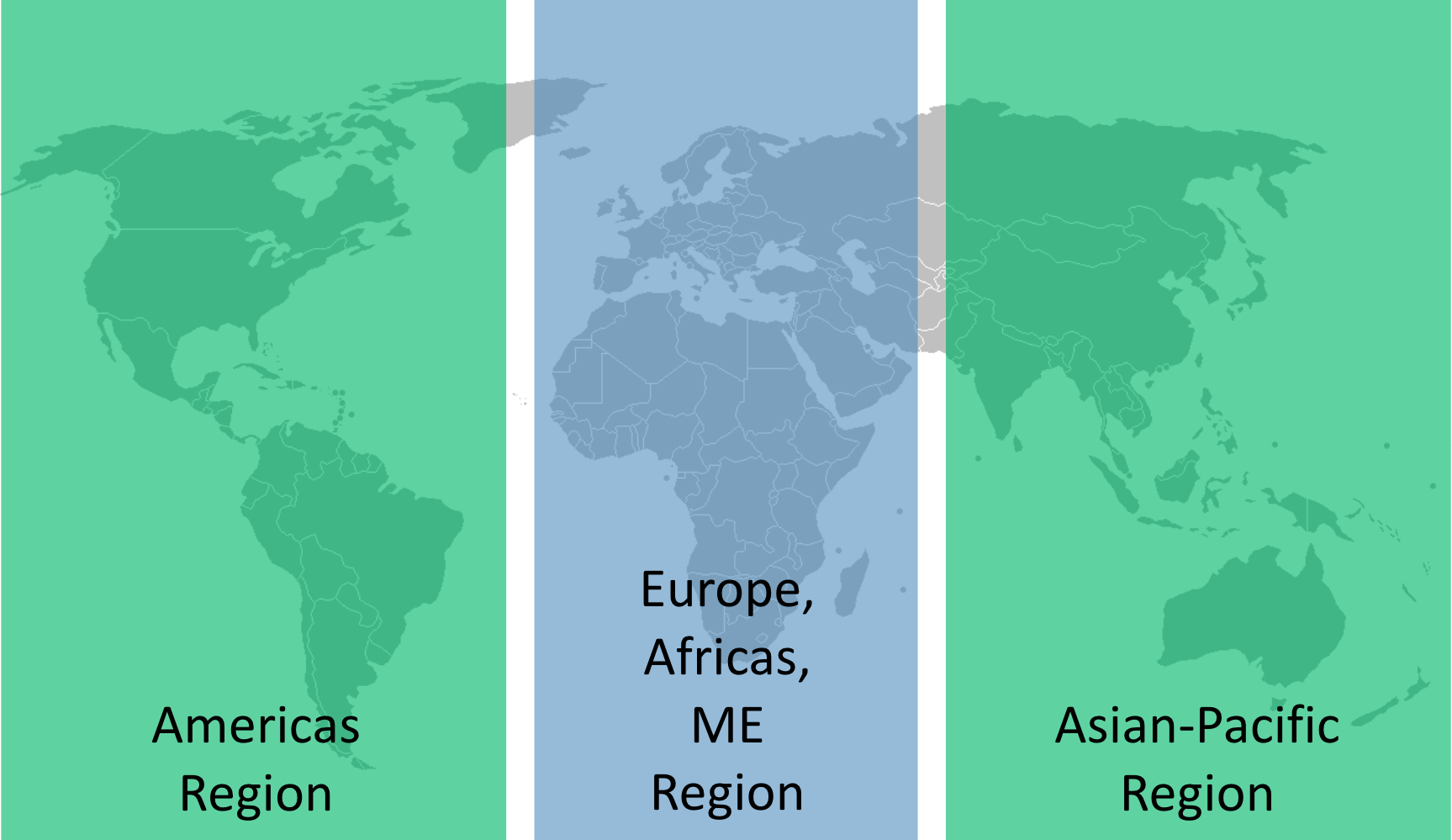Membership and Organization
Steering Committee membership is meant to target regions where OpenHIE is being implemented and making an impact. Current representation is based on dividing the world into three regions;
- Americas
- Europe, Africas, Middle East
- Asian-Pacific
As the community grows and so will the Steering Committee. As this occurs we will broaden our membership by breaking representation down into sub-regions.
- The exact number of Steering Committee members shall be specified by the committee itself and at not less than seven.
- The Steering Committee will be led by a chairperson, appointed internally. The chairperson will be supported by a co-chair (also appointed internally), who can oversee meetings when the chairperson is unavailable.
- The Steering Committee will be comprised primarily of in-country leadership: at least 50% of members will be direct ministry of health or ministry designated members.
- Other members should ideally be direct beneficiaries of the community’s proceeds to insure community is moving in the proper direction
- The Steering Committee shall be a permanent consultative and adjunct part of the OpenHIE community, and works to provide direct guidance and oversight to the Operational Leadership Team.
- The Operational Leadership Team will help identify a Steering Committee leader on a rotating term to be determined.
- The Steering Committee should include individuals that represent critical areas of expertise that are relevant to the OpenHIE community, and embody the following attributes:
- desire to improve health equity throughout the world
- an ability to communicate advice in a way that can tangibly be acted upon
- openness to other perspectives
- understanding of the health information system landscape within low and middle income countries
- Members shall initially be appointed for a two or three year term and can be renewed as appropriate (as needed to stagger member transitions over time); the Steering Committee can recommend the terms and appointment and reappointment process once the Committee is established. These recommendations will be approved by the Operational Leadership Team.
- The steering committee is supported by a light secretariat team that will arrange for meetings, manage intergroup communications, keep notes for meetings, and perform related support functions.
Meetings
- The Steering Committee shall meet regularly for at least one hour on a quarterly basis, and shall provide recommendations to the Operational Leadership Team through:
- Direct feedback in meetings,
- Subcommittees as relevant to the needs of the OpenHIE community,
- Written comments on OpenHIE Discourse,
- Individual availability as needed to members of the OpenHIE Leadership Team for advice and organizational guidance, and
- Asynchronous information and interaction.
- The Steering Committee shall be responsible for developing a schedule for regular meetings, using the monthly Steering Committee agenda developed by the OpenHIE Leadership Team as the basis for the quarterly meeting agenda, and working with the Steering Committee members as well as the OpenHIE Leadership Team as needed.
- One or more representatives of the Operational Leadership Team shall attend each regularly-scheduled Steering Committee meeting.
OHIE Steering Committee Recommendations
| HTML |
|---|
Iframe Macro src https://ohie.org/wp-content/uploads/2022/11/Recommendation-Highlight-4.pdf
Decision Making Process
While the Steering Committee is not responsible for making routine operational decisions, it is tasked with providing overall direction and recommendations to the Operational Leadership Team from a basis of often rather complex socio-technical and socio-political content. As such, varying perspectives amongst the Steering Committee is expected, and a welcome part of the engagement. Therefore, a decision-making process to provide recommendations on behalf of the Steering Committee can sometimes be important.
In general, the Steering Committee will strive to find unanimous approval for its recommendations. If that is not possible, a lightweight, structured process to arrive at consensus approval can be used. Essentially, achieving consensus occurs when there’s an absence of sustained opposition around a given issue. This typically happens when the group has heard conflicting arguments, and taken into account all of the views of the members. While arriving at consensus, a number of techniques may be used informally to assess the position of members of the group. Achieving general consensus doesn’t require everyone to agree.
Quorum for Steering Committee meetings requires that at least 51% of committee members are present. Attendance for all meetings is recorded in the meeting minutes. All recommendations will therefore be qualified as either consensus or unanimous recommendations from the Steering Committee upon publication.
The decision making process is a derivative of ISO consensus definition.
